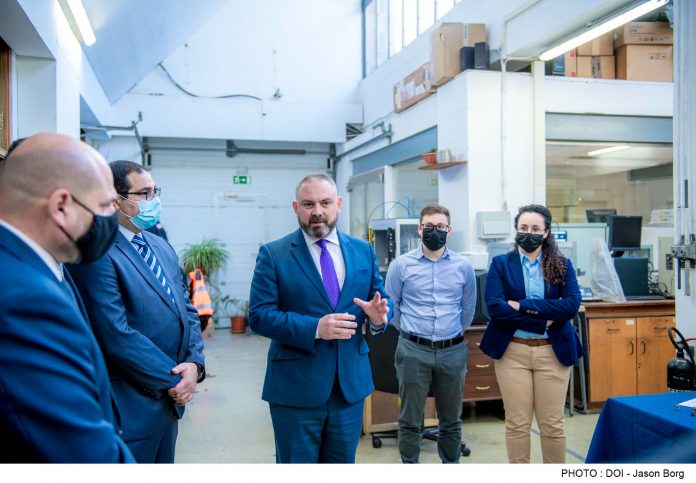A team of engineers at the University of Malta and medical professionals from Mater Dei Hospital are working on metal-based tailor-made bone scaffolds that degrade and allow the patient’s own bone to regrow. This project was made possible thanks to €200,000 in research funding from MCST.
Minister for Equality, Research and Innovation Owen Bonnici visited the labs at the University of Malta where the work related to the BioSA implant is taking place. During the event, Minister Bonnici was shown the physical BioSA implant at different production stages as well as the Scanning Electron Microscope, which was operated live with a BioSA implant inside.
During his visit, Minister Bonnici also had the opportunity to see the MaltaHIP implant, the first-ever made-in-Malta total hip joint replacement that provides superior wear resistance when compared to commercial prostheses. MaltaHIP was also made possible thanks to an investment of €200,000 in research funds.
During his address, Minister Bonnici praised this collaboration, which is leading to the development of innovative solutions that can truly improve people’s quality of life, by providing better and less invasive healthcare.
“It is of great satisfaction to see academics and medical professionals of such stature come together and join efforts to create such new solutions. The Government is committed to keep investing in research, and keep strengthening its efforts towards innovation by providing more and more and opportunities for our researchers,” Minister Bonnici said.
To create these patient-specific implants, this multidisciplinary team, led by biomaterials engineer Prof. Ing. Joseph Buhagiar, married medical imaging, 3D printing, and powder metallurgy.
Prof. Ing. Buhagiar explained that this project led to the development of a patient specific implant, called a scaffold, which is metallic and biodegradable. Scaffolds are porous support structures which can take biomechanical loads and at the same time allow bone ingrowth. The advantage of having a biodegradable scaffold would be that there is no requirement for a secondary operation to remove the implant. This is because the implant will degrade inside of the body but at the same time it is replaced by a bone.
The BioSA (R&I-2017-037-T) and the MaltaHip (R&I-2015-023-T) projects were financed by the Malta Council for Science and Technology through Fusion: The R&I Technology Development Programme.










